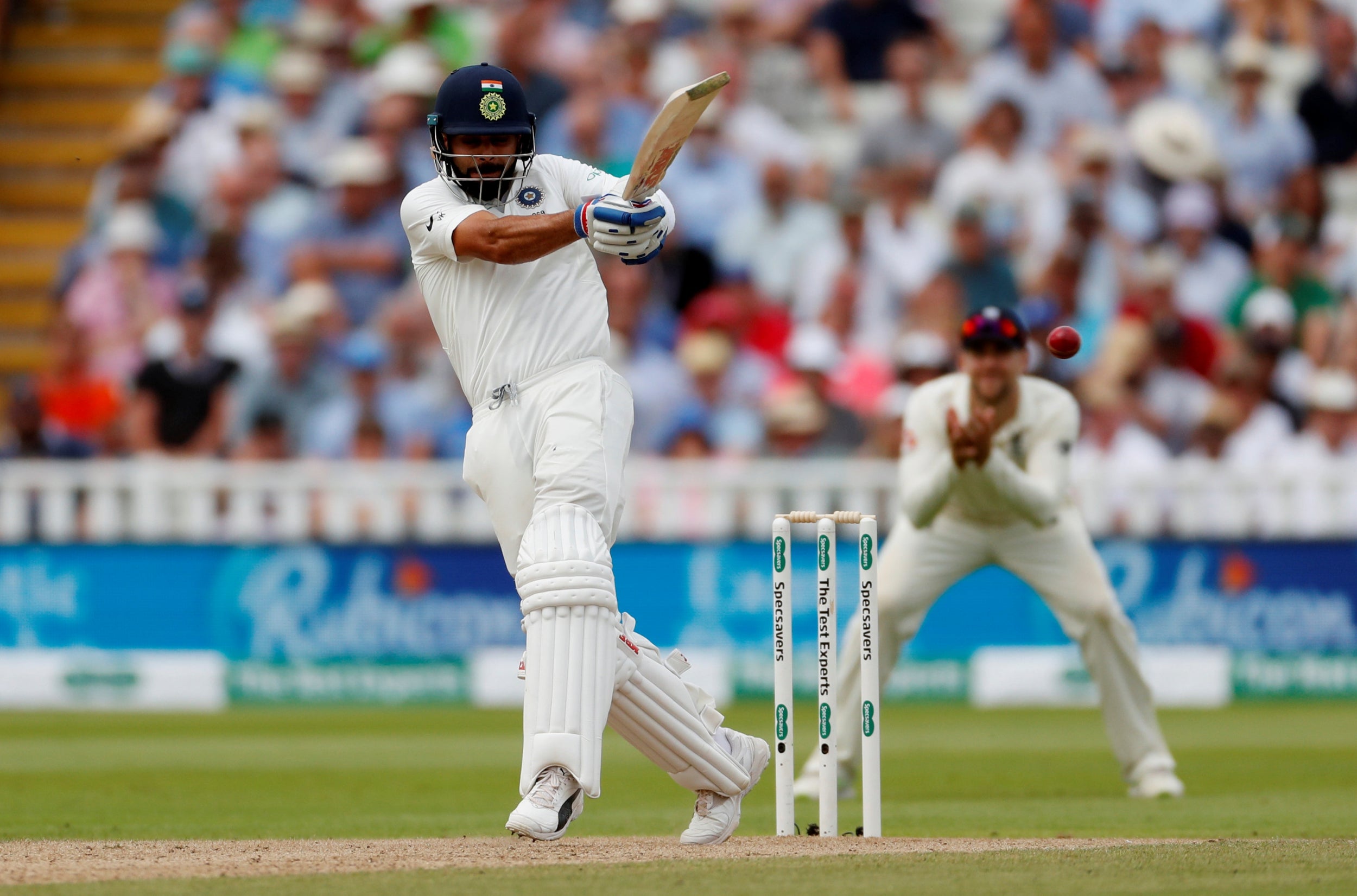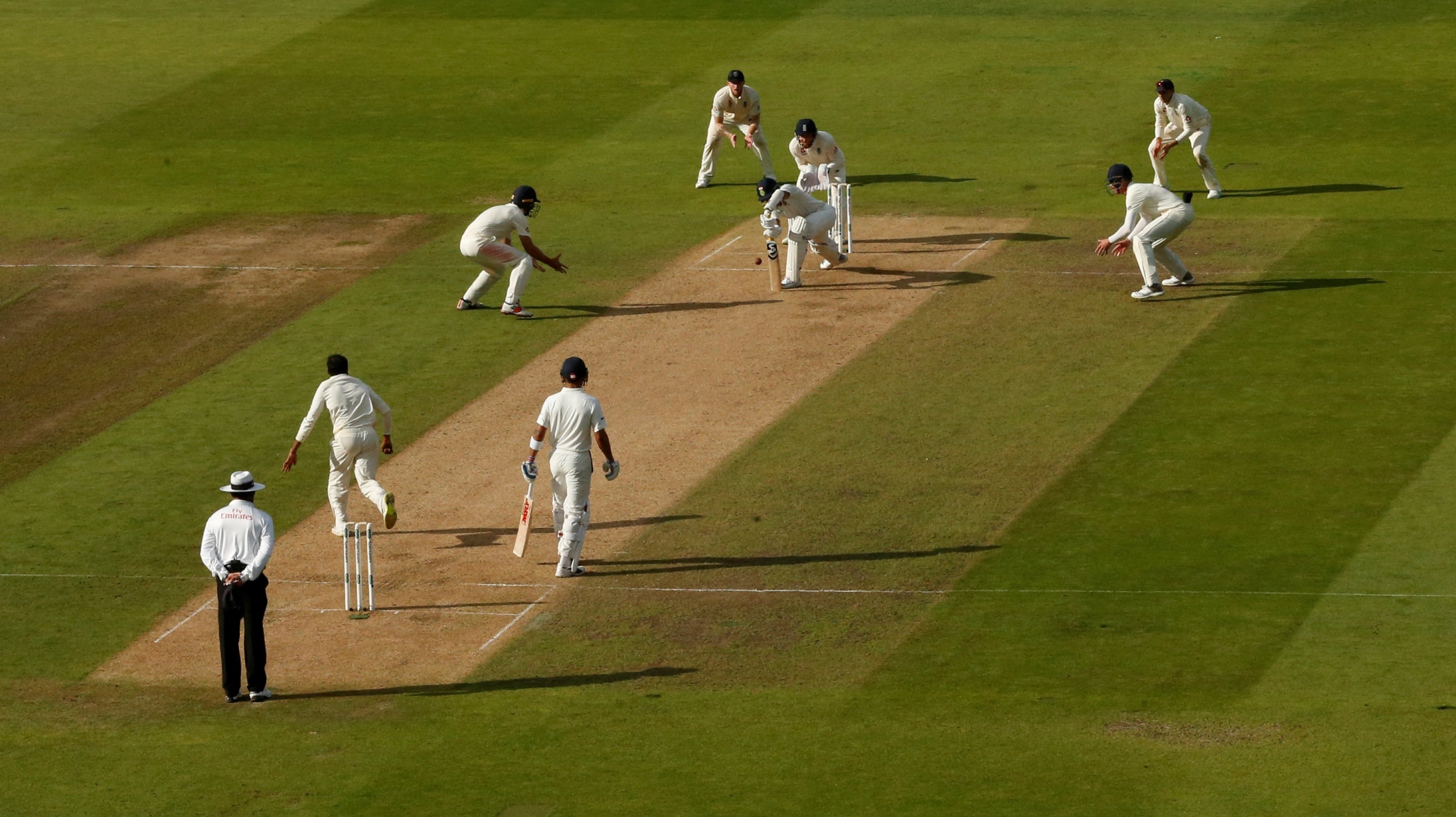Ben Stokes, Virat Slowly and slip-ups: Four things we learned from the second day of England’s first Test with India
It’s both a gift and a curse that Stokes is perhaps the most versatile fast bowler England currently have

Your support helps us to tell the story
From reproductive rights to climate change to Big Tech, The Independent is on the ground when the story is developing. Whether it's investigating the financials of Elon Musk's pro-Trump PAC or producing our latest documentary, 'The A Word', which shines a light on the American women fighting for reproductive rights, we know how important it is to parse out the facts from the messaging.
At such a critical moment in US history, we need reporters on the ground. Your donation allows us to keep sending journalists to speak to both sides of the story.
The Independent is trusted by Americans across the entire political spectrum. And unlike many other quality news outlets, we choose not to lock Americans out of our reporting and analysis with paywalls. We believe quality journalism should be available to everyone, paid for by those who can afford it.
Your support makes all the difference.1) Stokes – England’s second-best swing bowler?
It’s both a gift and a curse that Stokes is perhaps the most versatile fast bowler England currently have. He can bang it in on his natural length, just short of good, and bowl dry. He can rough batsmen up with bouncers. In white-ball cricket, he can fire in yorkers at the death, although as Carlos Brathwaite will attest, with not entirely unqualified success. But perhaps his most exciting and underrated guise comes when the ball is swinging.
Stokes the swing king is glimpsed only rarely in this country, and hardly at all abroad. But against Australia at Trent Bridge in 2015 (6-36), the West Indies at Lord’s in 2016 (6-22) and again here, Stokes showed that he can move the ball through the air like no other. According to CricViz data, he swung the ball 1.654 degrees, more than either Stuart Broad or James Anderson, widely regarded as the best swing bowler of his generation. Moreover, Stokes’s natural front-on action makes him England’s only natural in-swing bowler, allowing him to attack the stumps with vicious late swerve.
So how should England use him? The fact that Stokes still bowled 47 per cent of his balls short, more than any other bowler, suggests that he still regards the full in-swinger as an occasional weapon rather than a stock delivery – and he also averages less with the short ball than the full ball in Test cricket. And obviously, there’s more to being a great swing bowler than simply swinging it loads. But when the ball is moving around in the air, Stokes offers England a valuable alternative option, as India discovered to their cost here.
2) Virat Slowly – Kohli reins himself in
It’s a measure of Kohli’s prolific genius that as brilliant as this century was, it would still struggle to make his top five of all time. You’d have his 100 off 52 balls against Australia against Jaipur in there, the brilliant knock against England at Pune, at least two of his four IPL centuries and probably his 141 at Adelaide too, a knock which Kohli himself describes as his best. But as an emblem of his ability to conquer conditions – and his own history – there can have been few more important than this.

Kohli reached his 50 in a round 100 balls, having been dropped once – he’d be dropped once more soon after – and edged numerous balls down or through the slips. But what distinguished him from most of his top-order team-mates was his restraint: his percentage of attacking shots during those first 100 balls was just six per cent, his lowest ever, against a career average of 23 per cent. After the wicket of Ravi Ashwin, however, he went to town. His percentage of attacking shots after the fall of the seventh wicket was 49 per cent, and he scored 82 of India’s last 92 runs. They say a great batsman can move through the gears. Perhaps the greatness of Kohli is that he can simply switch from first to fifth at the flick of a switch.
3) England slip up again
Dawid Malan’s two drops of Kohli and Alastair Cook’s elementary shelling of Hardik Pandya were costly, but they shouldn’t have been surprising. Since the start of 2015, according to the table below, only India and Bangladesh have dropped a higher percentage of catches in the slips than England.
Percentage of slip catches dropped in Tests, 2015 to date:
New Zealand 90.9
South Africa 85.2
Sri Lanka 83.7
West Indies 81.4
Australia 79.3
Pakistan 78.4
Zimbabwe 77.7
Ireland 75
England 72.1
India 65.6
Bangladesh 42.1
Source: CricViz
You could argue that the ball moves around a lot more in England, making slip catching a more hazardous business. But the drop in sharpness from the team that snatched almost everything during the 2015 Ashes after Trevor Bayliss’s ruthless Spanish boot-camp is pronounced. “You can’t dwell on these things too much,” Sam Curran argued after day two. The evidence suggests England should try dwelling on it a little more.
4) Batting last may not be the disadvantage everyone thinks it is
Sanjay Bangar, India’s batting coach, insisted that the game was “in a very good balance”. And the late wicket of Cook to a vicious ripper from Ashwin offered two conflicting conclusions: firstly that England’s advantage had all but evaporated, and secondly that the amount of turn on offer would ultimately make England strong favourites in the fourth innings.

The data doesn’t suggest that. Since 2000, Edgbaston has actually been a very decent place to bat in the fourth innings. An average runs per wicket of 33 is actually five runs higher than it is in the third innings, and teams score their runs at a quicker rate too. Fourth-innings teams have also won four of the last five Tests here.
The most recent relevant example is from 2008, when England’s lead of 280 against South Africa was perceived to be more than enough on a dusty fourth-day Edgbaston pitch that was beginning to turn appreciably for Monty Panesar. Instead, the quick outfield and easy-paced wicket helped South Africa to a record chase on this ground, with Graeme Smith scoring a magnificent unbeaten 154. Panesar turned the ball plenty, but without much bounce or pace, he wasn’t a threat, bowling 33 overs and taking just two wickets.
A salutary tale for Joe Root’s England, who will likely need a lead well in excess of 300 to feel remotely secure of victory.
Join our commenting forum
Join thought-provoking conversations, follow other Independent readers and see their replies
Comments